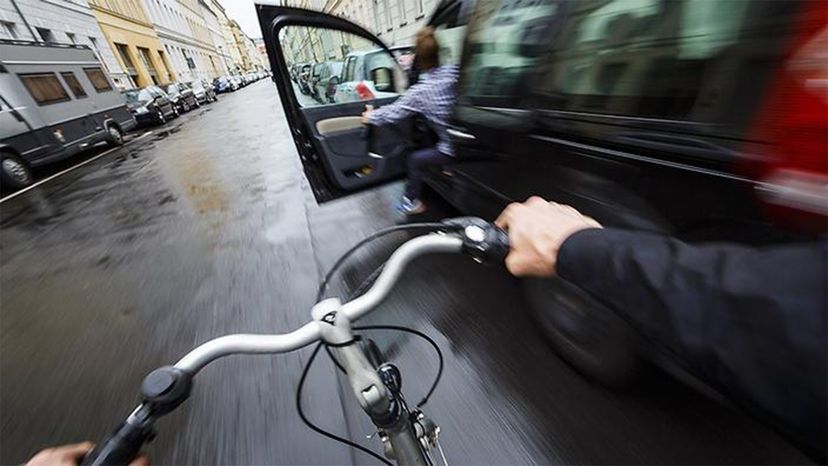
Rear cross-traffic alert. Blind spot monitoring. Pedestrian and cyclist detection. Automakers are coming up with numerous new safety features to help drivers and, more importantly, these features are becoming more available and affordable. Still, drivers shouldn't wait for these innovations to increase their own awareness of what is going on around their vehicles. What if there was a quick and easy way to reduce cyclist fatalities that doesn't require technology and works in any car?
It turns out there is, and it's called the Dutch Reach. Here's how it works. If you're in the driver's seat, instead of reaching down with your left hand and opening the door, reach with your right hand. Reaching across your body slows you down and forces your body and head to face the direction you're moving. You'll catch a glimpse of the side mirror, so you can see if a cyclist or pedestrian is closer than they appear, and then you will automatically look behind you to ensure no one is approaching.
Advertisement
Put simply, instead of flinging open the door with one hand and doing something else with the other (grabbing your bag, phone, coffee, whatever) the Dutch Reach forces you to be more conscious of what you're doing.
In 2016, there were 840 bicyclist fatalities on United States roads. According to the National Highway Traffic Safety Administration, that represents an increase of 1.3 percent over 2015 and is the highest number recorded since 1991. A 2015 study from Vancouver, British Columbia, showed that of the cyclists who were involved in a crash with a car, most injuries were caused by doorings, when a cyclist is hit by a car door that opens in their path. It's a common misconception that doorings aren't serious because the car isn't moving, but these common crashes can easily result in the cyclist's death. That means even if there isn't enough data to prove the effectiveness of the Dutch Reach, there is still plenty of incentive to make the effort to reduce or eliminate these types of collisions.
The Dutch Reach got its name because it is second nature to drivers in the Netherlands, who are accustomed to the country's bike-friendly culture before they even start to drive. The Dutch Reach is also taught in driver education in the Netherlands, in case anyone manages to miss the memo. Still, experts say it took some time for drivers and cyclists to coexist peacefully and safely, and the necessary changes didn't happen on their own. After time and effort, other European municipalities began to embrace the technique. That means that education and effort can make changes in the United States, too.
The Dutch Reach Project was created in 2016 by Dr. Michael Charney, in response to the death of a 27-year-old U.S. nursing student who died after colliding with an open car door. The Dutch Reach was first added to driver training manuals in Massachusetts (where the aforementioned fatality occurred) and Illinois. Washington became the third state to add the Dutch Reach to state driver materials as of February 2019.
In a New York Times story about the Dutch Reach, Peter Han, the survivor of a serious dooring crash in Washington, compared the technique to the idea of looking both ways before crossing the street. The Dutch Reach Project aims to raise awareness even more, educating drivers about the technique with the hopes the behavioral change will become a habit and the norm.
At the beginning of 2019, AAA and the National Safety Council started teaching the Dutch Reach in driver safety classes, which means that it may be on the way to becoming more widespread in the United States.
Learn more about bikes and bicycle safety in "Bicycling 1,100 Best All-Time Tips: Top Riders Share Their Secrets for Maximizing Performance, Safety, and Fun" by Jason Sumner (Editor). HowStuffWorks picks related titles based on books we think you'll like. Should you choose to buy one, we'll receive a portion of the sale.
Advertisement